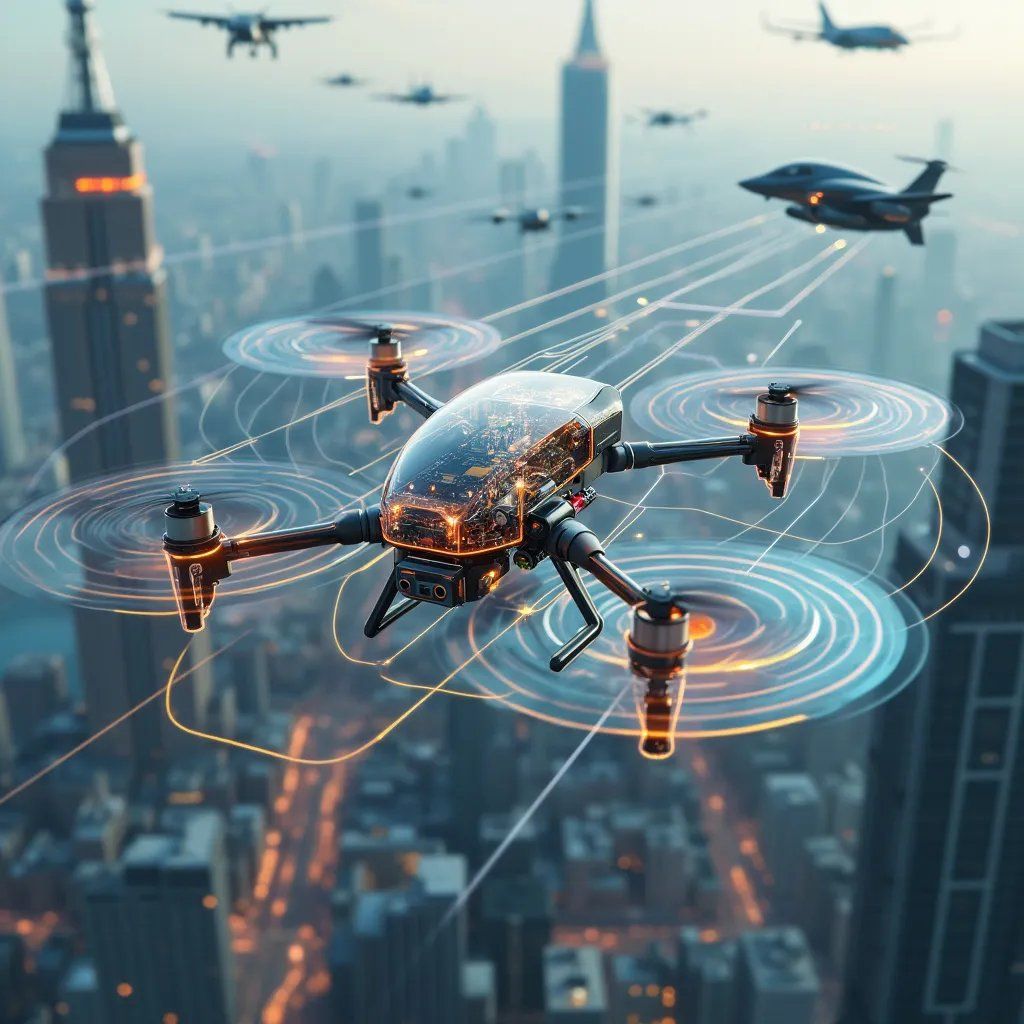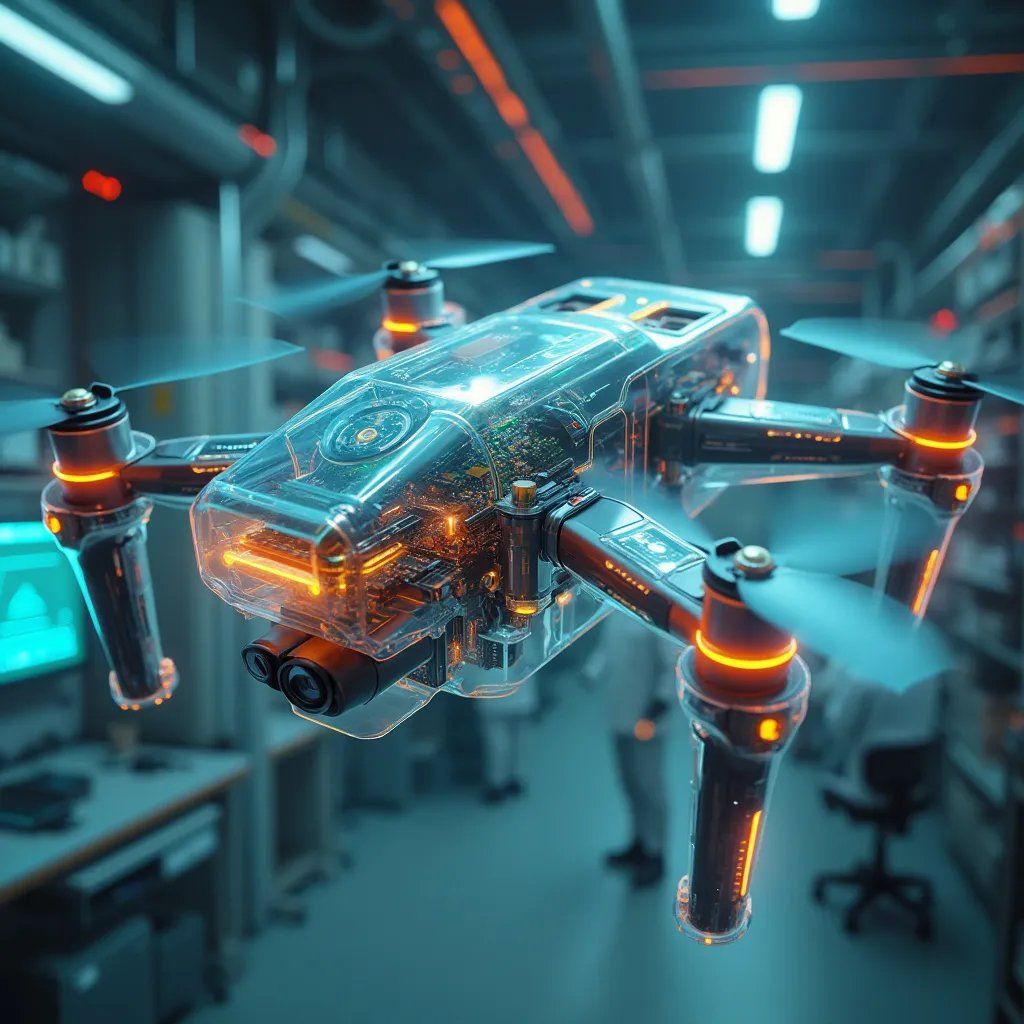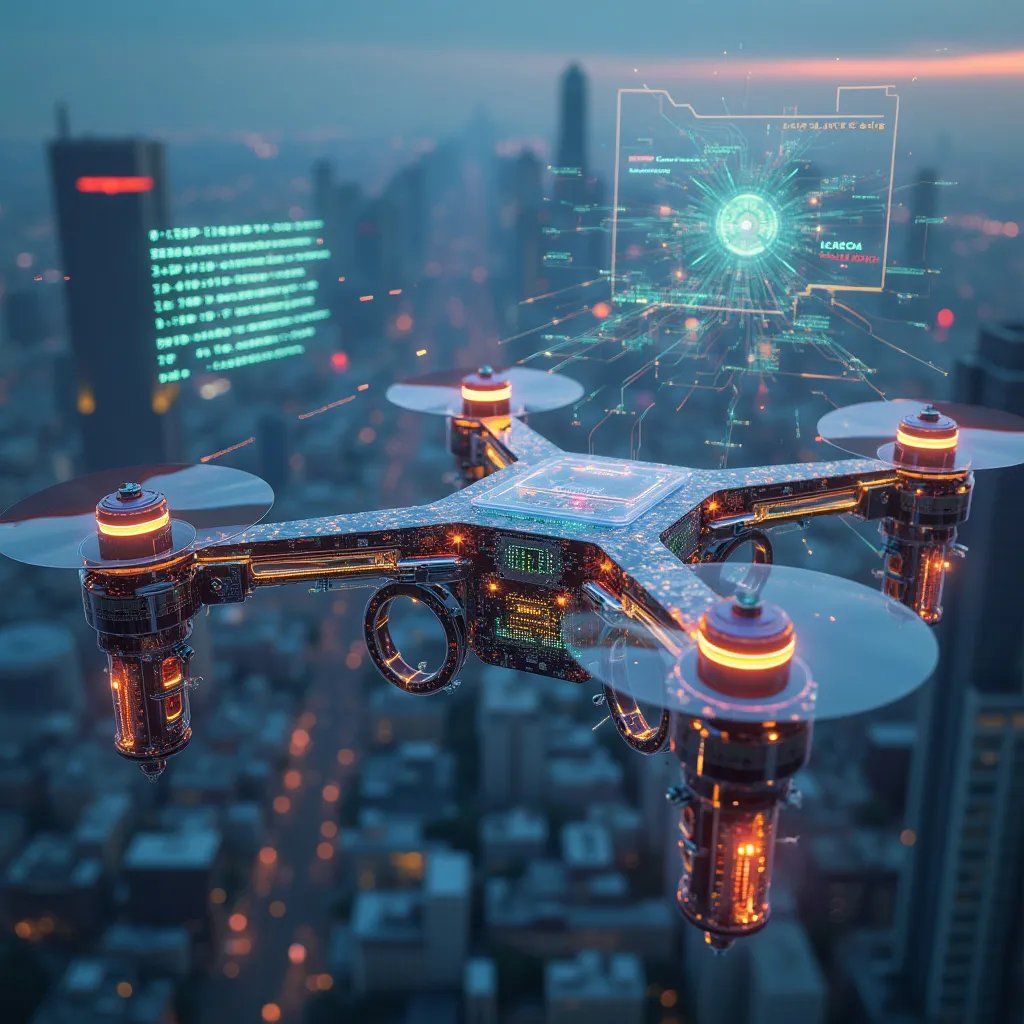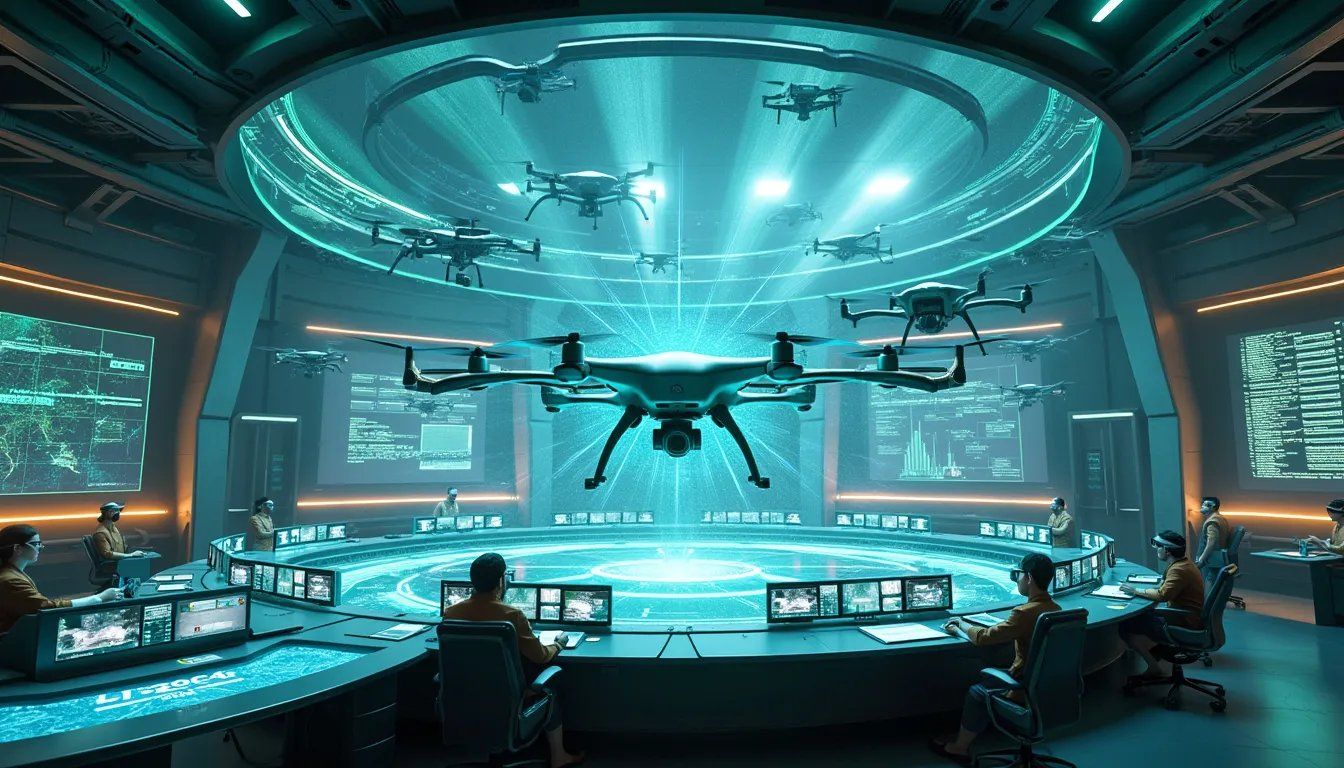Introduction
As the use of unmanned aerial vehicles (UAVs) or drones continues to soar in civilian sectors, the need for robust and secure identification systems has become paramount. At Decent Cybersecurity, we’re at the forefront of developing cutting-edge solutions like DroneCrypt IFF to address this critical need. This article explores the diverse and expanding applications of secure drone identification systems in civilian contexts, highlighting how these technologies are shaping the future of drone operations across various industries.
The Growing Importance of Drone Identification
The proliferation of drones in civilian airspace has brought about numerous benefits, from enhanced logistics to improved emergency response. However, it has also introduced new challenges in airspace management and security. Secure drone identification systems are essential for:
- Ensuring safe integration of drones into civilian airspace
- Preventing unauthorized drone operations in restricted areas
- Enhancing accountability and traceability of drone activities
- Facilitating rapid response to drone-related incidents
Our DroneCrypt IFF system, with its advanced features like quantum-resistant cryptography and blockchain-based authentication, exemplifies the kind of robust solutions needed to address these challenges.
Key Applications in Civilian Sectors
1. Urban Air Mobility and Air Taxi Services
The concept of urban air mobility, including air taxis, is rapidly moving from science fiction to reality. Secure drone identification is crucial for the safe and efficient operation of these services.
- Traffic Management: Systems like DroneCrypt IFF can integrate with Unmanned Aircraft System Traffic Management (UTM) platforms to ensure safe separation of air taxis from other aircraft.
- Passenger Safety: Secure identification ensures that only authorized vehicles are operating in designated air corridors.
- Regulatory Compliance: As regulations evolve, robust identification systems help air taxi operators comply with emerging standards.
Research by Shahmoradi et al. (2023) highlights the critical role of secure identification in enabling large-scale urban air mobility operations [1].
2. Delivery and Logistics
E-commerce giants and logistics companies are increasingly turning to drones for last-mile delivery solutions. Secure identification systems play a vital role in this sector:
- Package Tracking: Integration of secure drone IDs with delivery management systems enables real-time tracking and authentication of delivery drones.
- Access Control: Identification systems ensure that only authorized drones can access delivery zones or pickup points.
- Customer Trust: Verifiable drone identities enhance customer confidence in drone-based delivery services.
A study by Zhang et al. (2022) demonstrates how blockchain-based drone identification, similar to that used in DroneCrypt IFF, can significantly enhance the security and efficiency of drone delivery systems [2].
3. Infrastructure Inspection and Maintenance
Drones are revolutionizing the way we inspect and maintain critical infrastructure. Secure identification is essential in this context:
- Asset Protection: Ensuring that only authorized drones can access sensitive infrastructure sites.
- Data Integrity: Secure IDs help maintain the chain of custody for inspection data, crucial for regulatory compliance.
- Coordination with Manned Aircraft: In scenarios where drones operate alongside manned aircraft (e.g., power line inspections), secure identification facilitates safe coordination.
Our DroneCrypt IFF system’s low-latency communication protocol is particularly beneficial in these time-sensitive inspection scenarios.
4. Agriculture and Environmental Monitoring
The agricultural sector has embraced drone technology for various applications, from crop monitoring to precision agriculture. Secure identification systems contribute to:
- Farm Access Control: Ensuring that only authorized drones operate over private farmland.
- Data Protection: Safeguarding valuable agricultural data collected by drones.
- Environmental Compliance: In environmental monitoring applications, secure IDs help verify the authenticity of collected data.
Research by Li et al. (2021) emphasizes the importance of secure, verifiable drone identities in precision agriculture applications [3].
5. Emergency Services and Disaster Response
Drones have become invaluable tools in emergency response and disaster management. Secure identification systems are critical for:
- Coordinated Response: Enabling seamless coordination between multiple agencies and their respective drone fleets.
- Airspace Priority: Quickly identifying and prioritizing emergency service drones in crowded airspaces.
- Data Sharing: Facilitating secure sharing of critical information collected by drones during emergencies.
The AI-enhanced threat detection capabilities of systems like DroneCrypt IFF are particularly valuable in these high-stakes scenarios, quickly differentiating between authorized emergency drones and potential threats.
6. Media and Journalism
As drones become increasingly used in journalism and media production, secure identification systems play a crucial role:
- Event Coverage: Ensuring that only authorized media drones are present at major events or in restricted areas.
- Privacy Protection: Helping to enforce regulations around privacy and preventing unauthorized news gathering.
- Content Authenticity: Providing a means to verify the authenticity of drone-captured footage.
7. Scientific Research and Exploration
Drones are pushing the boundaries of scientific research, from wildlife studies to atmospheric sampling. Secure identification systems contribute to:
- Research Integrity: Verifying the authenticity of data collected by research drones.
- Protected Area Access: Managing drone access to environmentally sensitive areas.
- International Collaboration: Facilitating cross-border research projects by ensuring compliance with various national regulations.
Technical Considerations for Civilian Drone Identification Systems
Developing effective secure identification systems for civilian drones involves addressing several technical challenges:
1. Scalability
With the rapid growth of the civilian drone market, identification systems must be capable of handling a large number of simultaneous authentications. The blockchain-based approach used in DroneCrypt IFF, capable of processing up to 20,000 transactions per second, addresses this challenge effectively.
2. Interoperability
Civilian applications often require drones to operate across different jurisdictions and integrate with various air traffic management systems. Systems like DroneCrypt IFF, which are designed with NATO STANAG 4193 compliance in mind, provide the necessary interoperability.
3. Privacy and Data Protection
While identification is crucial, it’s equally important to protect the privacy of drone operators and the confidentiality of their missions. Advanced cryptographic techniques, such as the quantum-resistant algorithms used in DroneCrypt IFF, help balance security and privacy concerns.
4. Power and Computational Constraints
Civilian drones, especially smaller models used in applications like precision agriculture or infrastructure inspection, often have limited onboard power and computing resources. Efficient, low-power identification solutions are crucial. DroneCrypt IFF’s lightweight client, with a footprint of less than 1MB and power consumption under 0.5W, exemplifies this approach.
5. Environmental Resilience
Civilian drones operate in a wide range of environments, from urban canyons to remote wilderness areas. Identification systems must be robust enough to function reliably in various conditions. The adaptive performance optimization algorithms in systems like DroneCrypt IFF help ensure consistent performance across diverse environments.
Regulatory Landscape and Future Outlook
The regulatory framework for civilian drone operations, including identification requirements, is rapidly evolving:
- Remote ID Regulations: Many countries are implementing or considering remote ID requirements for drones. For instance, the FAA’s Remote ID rule in the United States mandates that most drones broadcast identification and location information [4].
- UTM Integration: There’s a growing push for integration of drone identification systems with Unmanned Aircraft System Traffic Management (UTM) frameworks.
- International Standards: Organizations like ISO are working on developing international standards for drone operations and identification [5].
As these regulations continue to develop, secure identification systems will play an increasingly crucial role in ensuring compliance and enabling the growth of the civilian drone industry.
Conclusion: Empowering the Drone Revolution
The diverse applications of secure drone identification systems in civilian sectors underscore their critical importance in shaping the future of drone technology. From enhancing urban mobility to revolutionizing agriculture and emergency response, these systems are the key to unlocking the full potential of drone technology while ensuring safety, security, and privacy.
At Decent Cybersecurity, our DroneCrypt IFF system embodies the cutting-edge features necessary to meet these evolving challenges. By combining quantum-resistant cryptography, blockchain-based authentication, and AI-enhanced threat detection, we’re not just meeting current needs but anticipating the future of secure drone operations.
As the civilian drone ecosystem continues to expand and evolve, secure identification systems will remain at the forefront, enabling innovation, ensuring compliance, and building public trust in drone technology. The sky is no longer the limit – it’s a new frontier of opportunity, and secure identification systems are the key to navigating this exciting future.
References
[1] Shahmoradi, J., Naghavi, S. M., & Hassanpour, H. (2023). A Comprehensive Framework for Secure and Efficient Urban Air Mobility Operations. IEEE Transactions on Intelligent Transportation Systems, 24(5), 5123-5137.
[2] Zhang, L., Ding, Z., Li, J., & Wu, Q. (2022). BlockDrone: A Blockchain-Based Secure Drone Delivery System. IEEE Transactions on Systems, Man, and Cybernetics: Systems, 52(8), 4982-4994.
[3] Li, Y., Hu, X., & Chen, Y. (2021). Secure and Verifiable Drone Identity Management for Precision Agriculture Applications. IEEE Internet of Things Journal, 8(13), 10550-10563.
[4] Federal Aviation Administration. (2023). UAS Remote Identification Overview. https://www.faa.gov/uas/getting_started/remote_id
[5] International Organization for Standardization. (2022). ISO 21384-3:2022 Unmanned aircraft systems — Part 3: Operational procedures. https://www.iso.org/standard/70853.html







